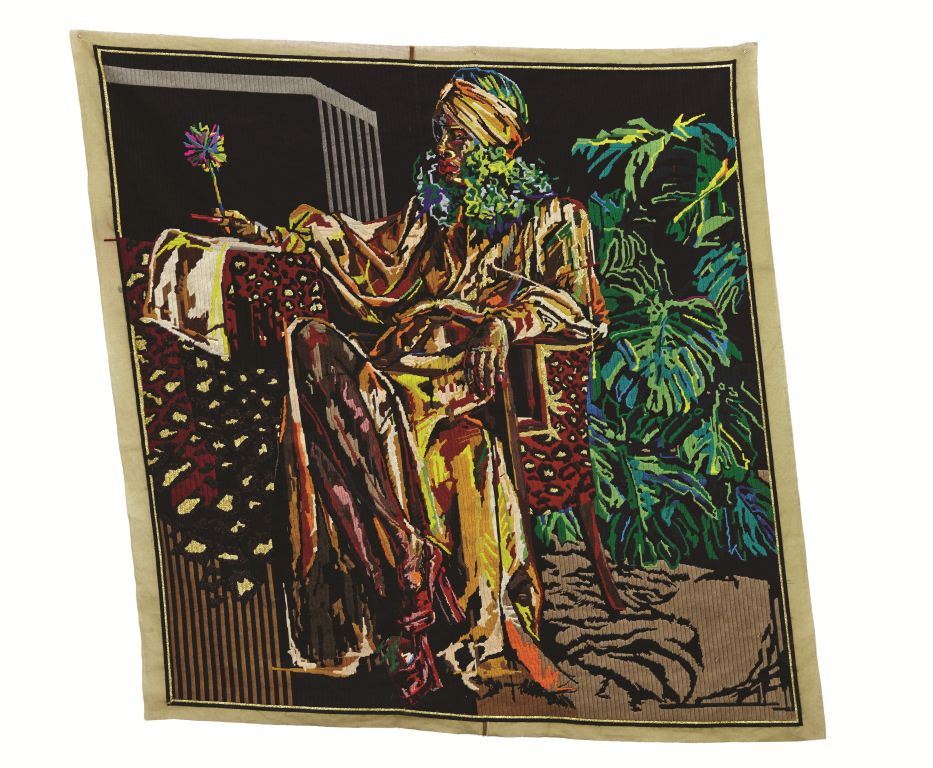Contemporary art created by African artists in Africa and abroad has long been recognized across the African continent – yet failed to make any international impact.
Thankfully that has spectacularly changed, and over the past few years, African art has hit a tipping point.
For instance, shimmering bottle top wall-hangings by Ghanaian sculptor El Anutsui decorated the exterior of the Royal Academy in London last year and his work New World Map sold for £541,250 ($873,400) in 2012.

But while renowned artists such as El Anutsui and Ibrahim El-Salahi from Sudan have broken through the international ceiling and are bought by museums in London and New York, most African artists remain invisible to the West because they don’t exhibit there.
Art entrepreneur Touria El Glaoui quickly realized when she traveled through Africa on business that she saw “amazing talent and amazing art” yet there was no international platform for those artists, only “a huge gap”.
So last year she came to London, which is at the heart of the international art market, and set up 1:54, London’s first contemporary art fair dedicated to visual art from Africa.
Same time as Frieze Week
El Glaoui timed it to coincide with Frieze Week, a landmark on the London art calendar attended by 70,000 art buyers.
“The artists we showed were both established and more up and coming, but perhaps they didn’t have a gallery, they didn’t have representation, they hadn’t yet been collected by a museum,” she says.
Although a risk at the time, piggybacking Frieze Week proved a great success. The art, sculpture and photography on sale at 1:54 was priced between £2,000 ($3,200) and £200,000 ($322,000), and the 14 exhibiting galleries sold every single item and played host to 6,000 visitors including the great and good of the art world.
Those collectors who turned up late found all the works had been sold and actually complained ‘why didn’t you bring more work with you to sell?’ Perhaps unsurprisingly, given last year’s success, 1:54 is back in October, with 85 artists sold through 27 galleries, and this time has taken two wings of Somerset House in Central London.
So what led El Glaoui to become an art entrepreneur with a passion for helping artists from Africa build an international career?
Learnings from dad
El Glaoui was born into a family of artists in Morocco, and her 90-year-old father is Hassan El Glaoui, one of Morocco’s most famous living figurative painters. This, and the fact that she has been dealing with galleries on behalf of her father for 15 years, gave her instant credibility in the art world.
She has learned hugely from the experiences of her father, who quickly established himself in Paris, but chose to return to Morocco to paint in 1965. He took a long time to rebuild an international reputation.
“Of course today, my father sells in the secondary market at Christies and Sotheby’s, but an international gallery would have changed where he is in terms of pricing.”
She is keen to share this insider’s knowledge of dealing with galleries and the international art market with up and coming and more established artists from Africa.
“All artists would prefer to be considered mainstream artists, and I know what’s needed for them to succeed.”

El Glaoui explains that the price which collectors are willing to pay for art is to a large extent influenced by factors such as having an agent and a gallery to promote an artist internationally, having work bought by influential museums and private collectors, and also by winning art prizes.
Linking artist with collector is critical, and so El Glaoui is excited to have recently signed a deal for 1:54 content to be exhibited on Artsy, the New York based online art gallery which links 250,000 subscribers with established galleries and artists around the world. This will give her artists a global platform for sales and recognition.
Putting African art on the map is just what she intends to do, and El Glaoui has ambitions to replicate the Fair in other countries, the obvious next location being New York. Finally, once the 1:54 brand is well established she would like to bring the 1:54 Fair back to Africa.
